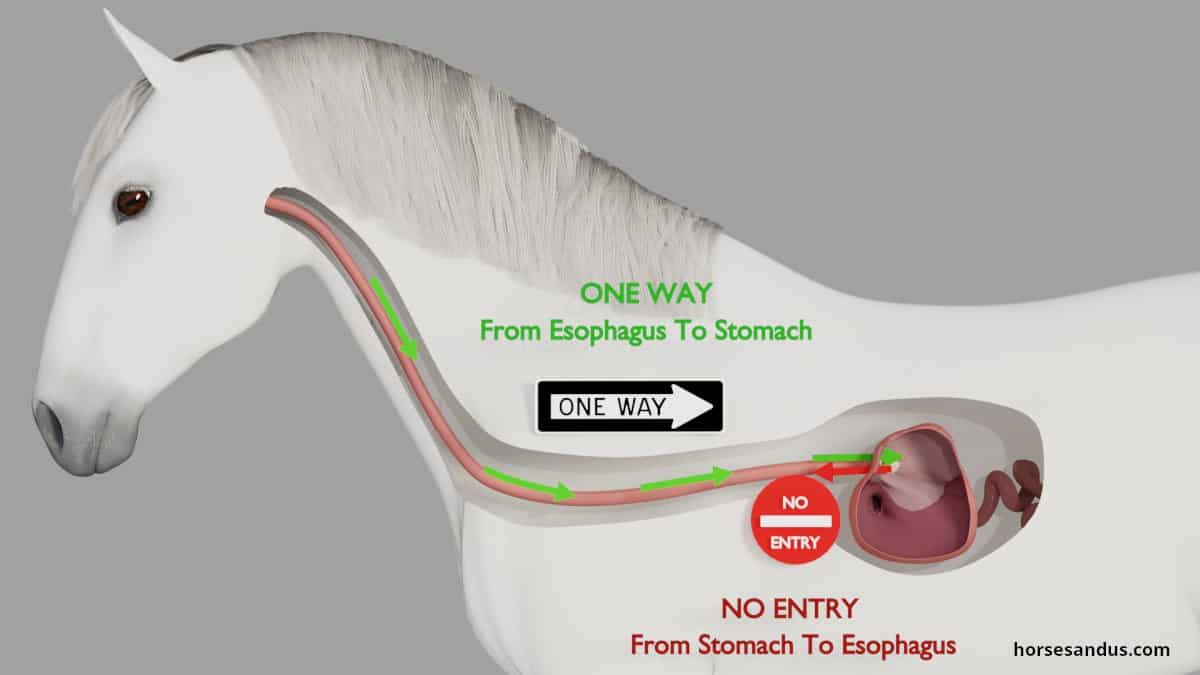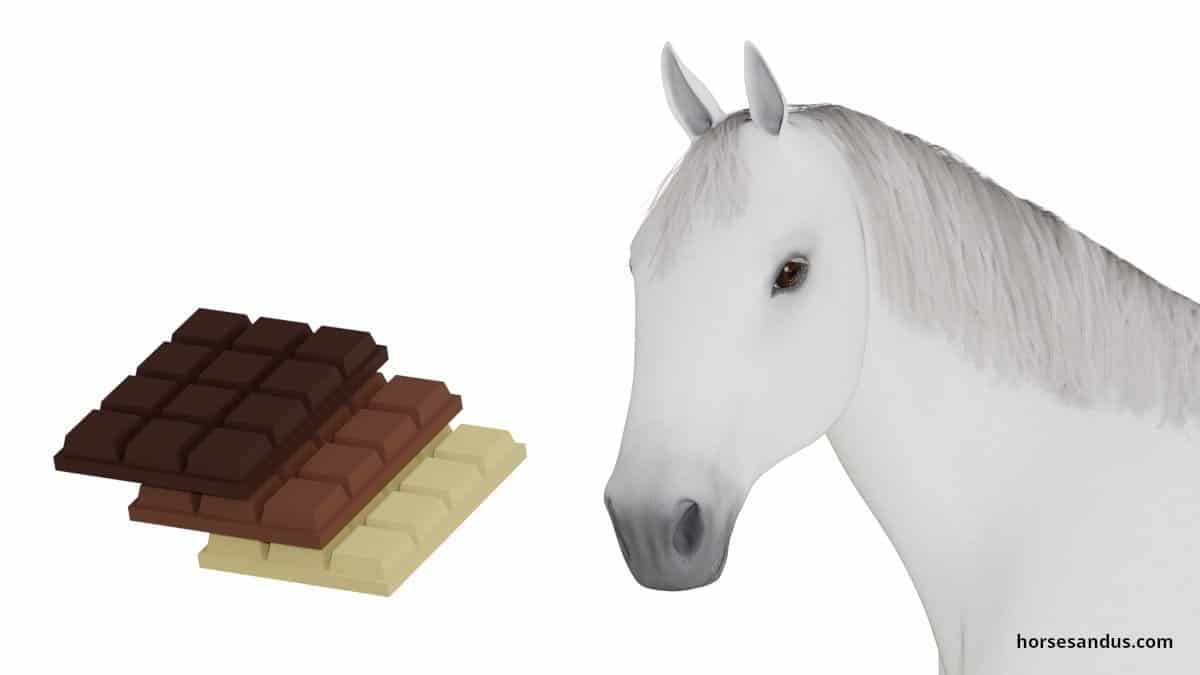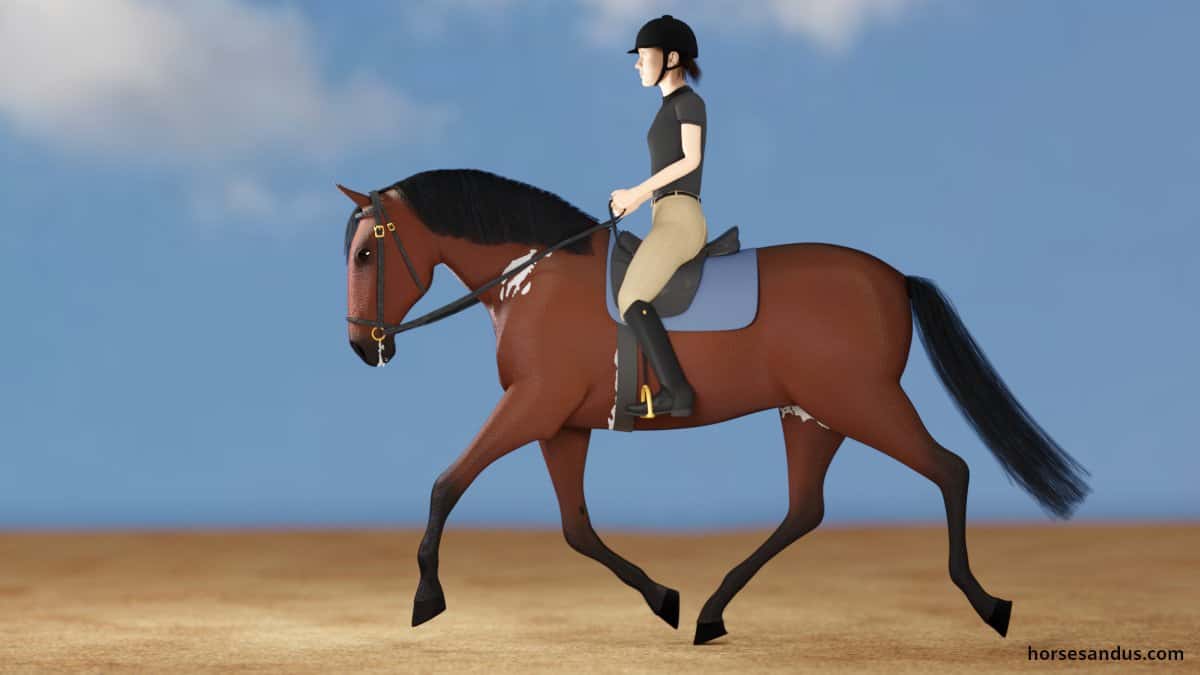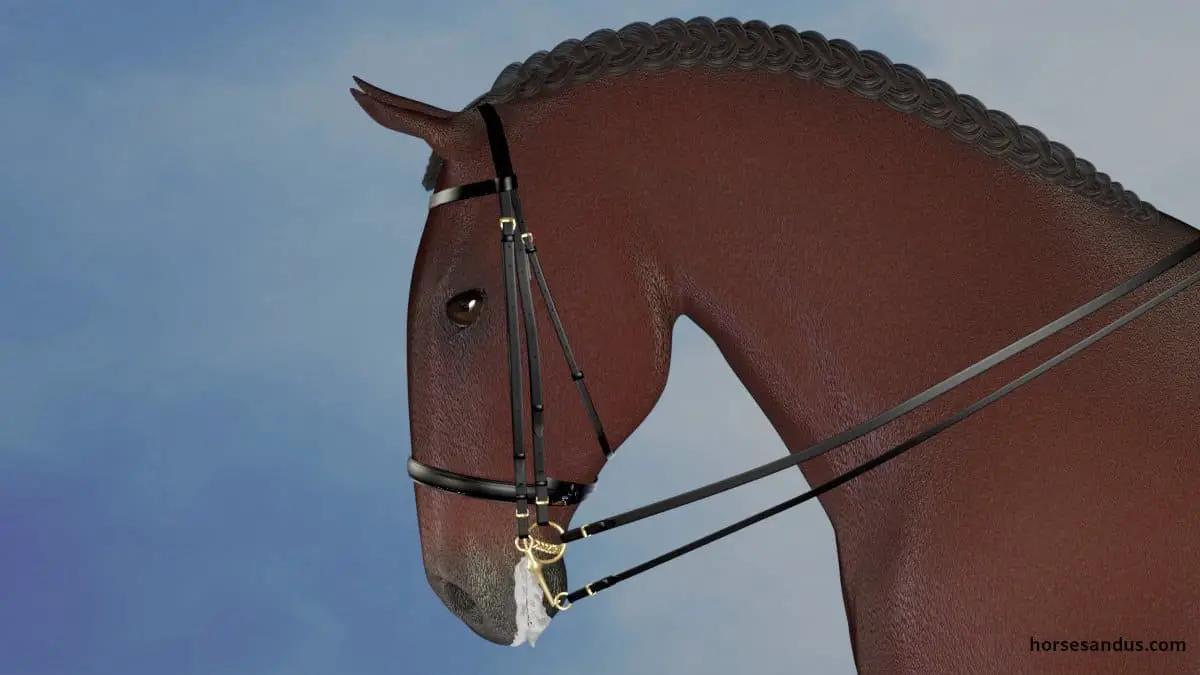Vomiting is an essential survival mechanism for many animals, including us. It is a way to get toxic substances out of the body before they can cause harm. Surprisingly, horses do not have this ability.
Horses can’t vomit because their digestive tract is designed to move food in only one direction. The main reason is that their cardiac sphincter squeezes so tightly that pressure from the stomach cannot open it. Under extreme pressure, it is more likely that the stomach wall will burst.

There are other characteristics of the horse’s digestive system that do not allow the horse to vomit. We will explain them in this article and also the reasons why the horse was designed this way.
Why it is physically impossible for horses to vomit
The horse is adapted to eat small and frequent portions of food. Thus its digestive system has a series of one-way passages (sphincters) to keep the food constantly moving in a one-way direction along the digestive tract. This prevents the horse from being able to vomit the food.
There are 3 main reasons why the horse can’t vomit.
1 – The muscles of the esophagus contract in only one direction
The esophagus is a muscular tube, approximately 1.5 m (60 inches) long. It moves the food from the mouth to the stomach through a series of rippling muscular contractions called peristaltic waves.
In a horse, these contractions work in only one direction, from the mouth to the stomach. This means that the horse cannot bring the food back up the esophagus to vomit.
Other animals (the ones that can vomit) have the ability to reverse these muscle contractions in the opposite direction so that vomiting can be possible.

2 – The cardiac sphincter is very strong
A muscular ring called the cardiac sphincter, also known as the lower esophageal sphincter (LES), connects the esophagus to the stomach. This sphincter acts like a valve that relaxes to let the food into the stomach, and afterward, it closes by squeezing down the opening.
In a horse, this sphincter is very strong. Once it closes, it is almost impossible to open under the pressure made when the horse’s stomach becomes bloated with either gas or food.
In other animals (those that can vomit), this sphincter is a two-way valve. It lets the food travel normally into the stomach. But also, when pressure builds in the stomach, it opens to allow food or gas to move back into the esophagus and out of the mouth.

3 – The Esophagus joins The Stomach At A Sharp Angle
In horses, the esophagus joins the stomach at a sharp angle. So when the stomach is distended with gas or food, the stomach wall will press against the cardiac sprinter, closing it even more tightly.
The cardiac sphincter’s strength and the angle between the esophagus and the stomach explain why a horse’s stomach would actually explode before he could vomit.
However, occasionally it is reported that a horse has vomited. But most likely, these are cases of horses choking rather than actually vomiting.
If it is, in fact, a case of vomiting, then the stomach is probably ruptured, and the horse will die. However, there have been very rare cases of horses that actually vomited and survived.
Why horses were designed To Not Vomit
Certainly nature designed horses this way because it brought them an advantage for survival.
We do not know for certain why the horse evolved this way, but we can identify some reasons why this may be beneficial for them.
Advantages of horses not being able to vomit
1. Not Vomiting When Running
Studies have shown that when horses are running, the abdominal muscles’ contraction forces the food into the upper part of the stomach. This is the area of the stomach that connects to the esophagus.
If the cardiac sphincter did not block the passage to the esophagus, the food would also flow into the esophagus and most probably out of the mouth.
This would result in the vomiting of food every time a predator chased the horse, which would have the following consequences:
- more vulnerable to being caught by the predator.
- loss of nutrients
This would obviously put at risk the survival of the horse. So not being able to vomit will eliminate this risk.

2. Protect the Esophagus From Acidic Stomach Liquid
Horses produce a very acidic gastric liquid to quickly break down the food and move it into the intestine.
However, they continuously produce gastric acid even when they are not eating, which means that acidic liquid is always present in their stomach. Horses can produce up to 16 gallons/60 liters of acidic gastric liquid per day.
Because of the cardiac sphincter’s impossibility to open, this acidic fluid will not be able to flow into the esophagus and damage it.
So not being able to vomit protects the esophagus from being damaged by the acidic stomach liquid.

How Horses Compensate the Inability to Vomit
Since horses cannot vomit, they developed instead their first defense line, which prevents them from needing to vomit.
1. Horses Will Usually Avoid Food That can Make Them Sick
Horses are very instinctive and are naturally picky about what they eat. They continuously sift through the vegetation and only pick what they like most. They will usually avoid food that can cause them to become sick. Toxic food is normally not tasteful for them, and they will reject it.
- So when horses are in their natural environment, they usually do not need to vomit to expel toxic substances. This is because they adapted to strengthen instead their first line of defense to avoid foods that can be toxic.
2. Horses Do Not Eat Excess Food That Would Need to Be Expeled
Horses are continuous grazers rather than gorgers. They eat many small meals during the day because they have a small stomach (approx 8 – 12 liters capacity). Also, the food moves quickly through the stomach (sometimes it only takes 15min).
Thus, the horse’s stomach does not tend to get full of food (because the meals are small) nor with gas (because the food moves quickly out of the stomach).
- So when horses are in their natural environment, they usually do not need to vomit or burp to expel excess food or gas.
The danger of horses not being able to vomit
Vomiting is an important defense mechanism in many animals. It is a way to expel toxic substances and excess food from the stomach that could otherwise be harmful.
Since horses can’t vomit, they have no way to get rid of the harmful substances. These will remain inside the body and put their health at risk and, in some cases, can even lead to death.
Domestic Horses are more exposed to harmful substances.
As we have mentioned earlier in this article, when horses are in their natural environment, they will rarely need to vomit.
But this is not the case with most horses today because they are exposed to toxic substances that would usually not exist in their natural environment.
Following are some of the risks to which horses are exposed nowadays.
- Animal feed that is intended for other species and contaminated with substances that are toxic to horses, such as cacao by-products or antibiotic additives.
- Poisonous plants, like, for example, oleander and yew.
- Pesticides in the stables and herbicides in the fields.
- Rotting hay and moldy corn.
Everyone who takes care of horses should know about these risks and make sure they don’t exist in their environment.
When to Call the Veterinarian
If you notice your horse is not feeling well and suspect that he has ingested something toxic, you should not try to solve this on your own. This is an emergency, and you should call your veterinarian immediately.
Meanwhile, until the veterinarian arrives, you should keep the horse away from the toxic substance and make sure he has fresh water available to drink.
You should never give your horse anything to make him vomit because this will cause major stomach spasms, which can lead to death.
How The Vet Can Help The Horse Expel Harmful Substances
When the veterinarian arrives, he will ask you to describe what happened and examine the horse to evaluate the situation’s severity.
He may take the following actions:
- Do a gastric lavage with a nasal tube to remove the toxic substance from the stomach. The vet will pass the tube through the nose, down the esophagus, through the cardiac sphincter, and finally into the stomach.

But since the food passes quickly through the stomach, the poison may have already passed the pyloric sphincter and moved into the intestines. So, in this case:
- The vet can use oral substances that can reach the intestines to help absorb the toxins, like activated charcoal.
- He may administer laxatives or mineral oil to speed up the intestinal transit so that the toxic substance can leave the body as soon as possible.
These actions may save the horse, and the key to success is to do an intervention as soon as possible.
Choking may be confused with vomiting
If a horse has a greenish or brownish foamy liquid with food particles coming out of his mouth and nose and is snorting, coughing, stretching his neck, and shaking his head… it may look like he is vomiting.
But since a horse cannot vomit, he is most probably choking.
Choking in horses may look alarming, but it is different from choking in humans. Unlike humans, horses that choke do not have difficulty breathing because the problem is not in the trachea but instead in the esophagus.
What Can Cause A Horse To Choke
Horses will choke when something gets stuck in the esophagus such as:
- Food that is too dry or coarse (hay or straw)
- Food that was not completely chewed (apples, carrots, etc.)
- Food that swells quickly after being chewed (sugar beet)
- Any item not intended for eating but which a curious horse may have swallowed.
If you think that your horse is choking, you should immediately call your vet and remove all food and water from his reach.
The horse will be distressed, so try to keep him calm until help arrives.
How The Vet Can Help A Choking Horse
When the vet arrives, he will assess the situation and try to remove the obstruction from the esophagus.
- He may sedate the horse to relax him so that the esophagus can dilate and allow the horse to swallow and remove the obstruction.
- He may pass a tube from the nose to the stomach to remove the obstruction.
- In severe cases, surgery may be necessary to remove the obstruction.
Can Horses Burp?
Horses cannot burp for the same reason they cannot vomit. The cardiac sphincter does not allow anything to move out of the stomach into the esophagus: neither food (vomit) nor gas (burp).
In humans, the cardiac sphincter can relax and allow gas to escape from the stomach in the form of a burp.
In horses, gas can only move in a one-way direction. So when the stomach fills with gas, the only way out is to move through the intestines and escape through the anus.
However, you may have heard from your horse a noise similar to burping. But this is air being released from the esophagus as a result of cribbing and wind sucking.
Cribbing and wind sucking force air down the esophagus, making a burping noise when it comes back out.


